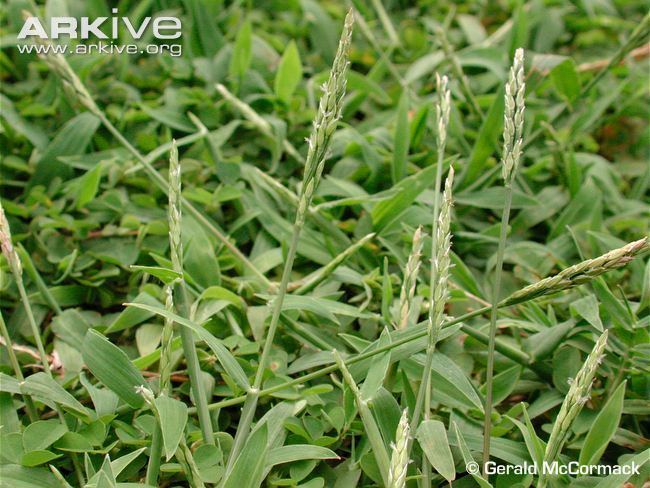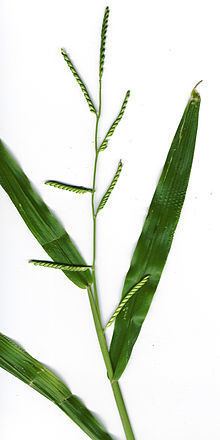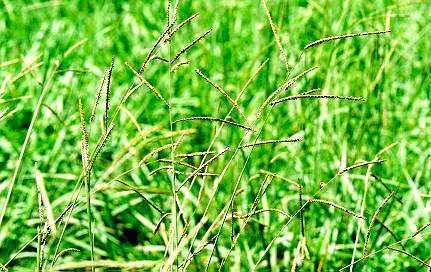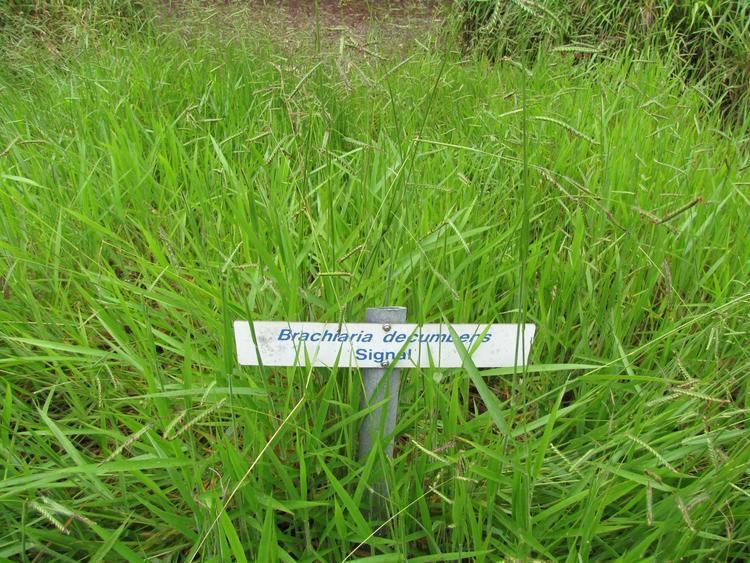Kingdom Plantae Higher classification Grasses | Scientific name Brachiaria Rank Genus | |
 | ||
Similar Urochloa brizantha, Grasses, Brachiaria humidicola, Megathyrsus maximus, Brachiaria ruziziensis | ||
Long lost african wonder grass brachiaria comes back to improve livestock farming
Brachiaria, or signalgrass, is a genus of plants in the grass family native to tropical and subtropical regions of Asia, Africa, Australia, southern Europe, the Americas, and various islands. There are over 100 species.
Contents
- Long lost african wonder grass brachiaria comes back to improve livestock farming
- Biology
- Ecology and Conservation
- Cultivation
- Diversity
- References
Some species are cultivated as forage. Some species of Brachiaria were probably first introduced unintentionally to the Americas in the colonial period, from slave ships. B. decumbens was introduced to Brazil in 1952 and B. ruziziensis in the 1960s. Brachiaria is the most widely used tropical grass in Central and South America, with about 40 million hectares planted in Brazil alone.

Biology

This genus was described in 1853. It is similar to Panicum, and some authors believe Panicum is ancestral to it. It has also been confused with Urochloa, and sometimes combined with it. A recent phylogenetic analysis concluded that Brachiaria and Urochloa are a monophyletic group, along with Eriochloa and Melinis, and that further molecular and morphological work is needed to establish clear relationships. In the meantime, Brachiaria and Urochloa plants are usually not difficult to distinguish from one another.

Brachiaria are annual or perennial grasses, most lacking rhizomes. The inflorescence is a branching panicle, and the plant reaches about a meter in height. The plants are bisexual and the flowers are fleshy, with 3 anthers. Some species have a prominent vein in the center of the leaf. Brachiaria are C4 species and can tolerate drier conditions and more light exposure than some other plants.
Ecology and Conservation

Brachiaria can grow in many environments, from swamps to shady forest to semidesert, but generally do best in savannas and other open tropical ecosystems such as in East Africa. In Angola, B. brizantha grows on termite mounds and in the ecotone between grassland and woodland habitat. In the Kora National Reserve in Kenya, Brachiaria dominates the ground layer along with Aristida. In India, the native B. ramosa is an important food source for the Eurasian collared dove (Streptopelia decaocto) and Brachiaria species are forage for other local herbivores.
In North America, the native B. platyphylla, broadleaf signalgrass, grows after heavy rains and then reproduces prodigiously and quickly, sometimes becoming a weed.
Wide expanses of the tropics, especially the Neotropics, have been converted to Brachiaria pasture to support livestock. In Brazil, 80 million hectares of native habitat have been planted with African grasses, mostly Brachiaria.
Introduced species such as Brachiaria grasses can degrade habitat and compete with native species. In Northern Australia, the exotic B. decumbens competes with the native tree Alphitonia petriei by inhibiting the growth of seedlings, slowing the conversion of abandoned pastureland to natural forest. In the Paragominas area of Brazil, however, native forest outcompetes cultivated stands of Brachiaria and other exotic forage grasses, and ranchers struggle to maintain pasture cover. Native species may also utilize exotic Brachiaria as a food resource, such as the rock cavy (Kerodon rupestris), a native rodent of the Caatinga.
Cultivation
Brachiaria is the single most important genus of forage grass for pastures in the tropics. Brachiaria cultivars can grow in infertile and acidic soils. Brazil is the leading user and producer of Brachiaria seeds in the Americas.
Mexico has put effort into improving its trade in Brachiaria cultivars, and the grass is thought to have made a positive impact on its milk and beef industries. Central American countries have also increased seed sales and area planted in the grass. The annual growth rate of seed sales in 2009 was 32% in Mexico, 62% in Honduras, 45% in Nicaragua, 39% in Costa Rica, and 54% in Panama. The area planted with Brachiaria during this period was about 6.5% of the total surface of permanent grasses in Mexico, 12.5% in Honduras, 1% in Nicaragua, 18.7% in Costa Rica, and 0.1% in Panama.
Agricultural pests of Brachiaria include spittlebugs, leafcutter ants, and mound-building termites.
Diversity
See Acroceras, Echinochloa, Eriochloa, Panicum, Paspalum, Urochloa.
